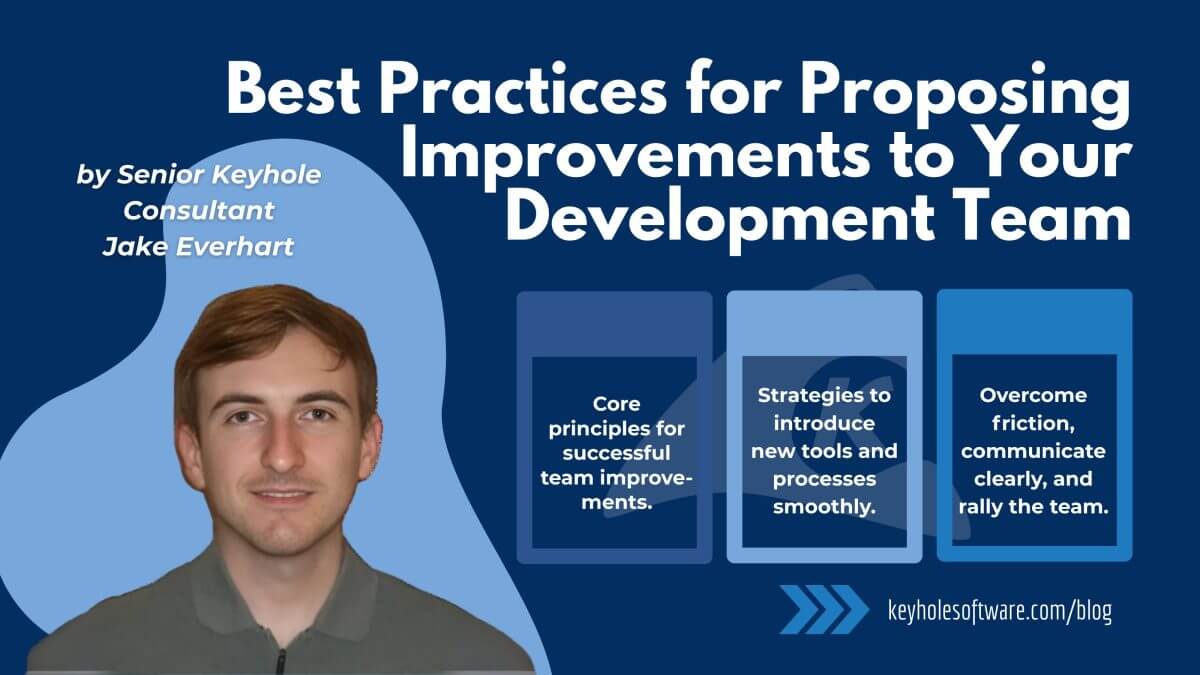
8 Proven Ways to Optimize Java Code Performance
October 14, 2024
If you work with Java, you’re likely aware that performance is crucial. No one wants a slow application, especially when scalability and user experience are on the line. Whether you’re building for today or scaling for tomorrow, optimizing your Java code performance can make all the difference.
Java offers a lot of flexibility, but with that flexibility comes responsibility. It’s easy to overlook optimizations in the rush to deliver features or meet deadlines. However, those seemingly small inefficiencies can add up, impacting performance over time. By focusing on the right areas, you can prevent bottlenecks, reduce memory consumption, and improve your application’s overall responsiveness. The good news? It doesn’t have to be complicated. With a few strategic tweaks, you can achieve major gains in speed and efficiency.
In this guide, we’ll share eight tried-and-true ways to enhance Java code, so your applications can stay fast and reliable as they grow.
1. Use Efficient Data Structures
Optimizing Java code performance often starts with selecting the most appropriate data structures. Data structures dictate how your application stores, retrieves, and manipulates data, and making the right choice can have a major impact on performance.
ArrayList vs. LinkedList
For example, if you need fast access to elements by index, an ArrayList is almost always preferable to a LinkedList. ArrayList allows for constant-time access (O(1)) to any element, as it stores data in a contiguous block of memory. In contrast, LinkedList, which stores elements as a chain of nodes, has linear-time (O(n)) access because it must traverse the list to find elements. However, LinkedList can be more efficient for operations that frequently add or remove elements from the middle of a list since those operations are slower in an ArrayList due to the need to shift elements.
HashMap vs. TreeMap
Similarly, when choosing between HashMap and TreeMap for key-value storage, performance is largely determined by whether or not you need your keys to be sorted. HashMap offers constant-time (O(1)) performance for insertions and lookups, making it the better choice for unsorted key-value pairs. On the other hand, TreeMap maintains sorted keys but with logarithmic time complexity (O(log n)) for operations, which introduces more overhead.
Even with set implementations, careful consideration can enhance performance. HashSet provides fast operations due to hashing, whereas TreeSet organizes elements in a sorted order with higher complexity. If ordering matters, LinkedHashSet maintains insertion order but incurs slightly more overhead than HashSet.
It’s not just about choosing the fastest structure—it’s about aligning the structure with your use case. Think about your data’s size, how frequently it changes, and how it will be accessed. These factors will help you decide between structures that prioritize quick access, efficient insertion/removal, or ordering, ultimately improving your application’s responsiveness.
2. Minimize Object Creation
Creating objects in Java can be expensive, especially when you’re working on large-scale applications. Each time you create an object, it consumes memory and triggers processing that adds overhead. In performance-critical applications, minimizing unnecessary object creation can provide significant benefits in terms of both speed and resource usage.
Object Pools for Reusable Objects
One way to reduce object creation is by using object pools, where reusable objects are kept in memory and repurposed when needed, rather than being recreated. This is particularly useful for objects that are costly to instantiate or are frequently used throughout the application.
Singleton Patterns Where a Single Instance Suffices
Another approach is applying the singleton pattern, where you ensure only one instance of a class is created when that’s all your application requires. This can be ideal for stateless utility classes or shared resources, reducing the overhead of creating new instances repeatedly.
By limiting the number of objects created, you not only save memory but also reduce the work of Java’s garbage collector, which would otherwise need to clean up those objects. Efficient memory management leads to fewer pauses and optimized overall Java code performance, especially in environments where responsiveness is key. Reducing unnecessary object creation is a powerful way to boost performance.
3. Optimize String Handling
In Java, strings are immutable, meaning each time a string is modified, a new object is created. This behavior can lead to significant memory overhead and performance degradation when working with strings in loops or when performing many concatenation operations.
To mitigate this, use StringBuilder (or StringBuffer in multi-threaded contexts) for string concatenation instead of the + operator. Since StringBuilder is mutable, it allows you to modify the string in place without creating new objects each time, which drastically reduces overhead in scenarios like looping or logging. For instance, in a loop that concatenates multiple strings, using the + operator would create a new string object with every iteration, whereas StringBuilder appends directly to the same object. This simple change can significantly improve both memory usage and execution time when handling large amounts of data.
By optimizing how you handle strings, you can prevent unnecessary object creation and memory churn, keeping your Java code performing smoothly and efficiently.
4. Use Caching
Implementing caching is one of the most effective ways to optimize Java application performance, particularly when dealing with expensive operations like database queries or complex computations. By storing frequently accessed data in memory, you reduce the need to repeatedly fetch or compute the same information, which can drastically cut down on processing time and resource consumption. Caching is especially beneficial in web applications where the same data is often requested multiple times by different users.
To implement caching effectively, Java offers several libraries and tools like Ehcache, Caffeine, or Guava Cache, each with different strengths depending on your application’s needs. For instance, Ehcache is widely used for distributed caching in large-scale enterprise applications, while Caffeine provides an in-memory cache with high-performance access patterns. When using caching, it’s important to define cache expiration strategies to avoid stale data and ensure that only frequently needed items remain cached. By balancing cache size, eviction policies, and expiration time, you can significantly reduce database load and improve response times for end-users.
5. Leverage Java’s Built-in Streams and Parallelism
Java 8 introduced the Stream API, offering a modern, efficient way to handle data processing. By using streams, you can write clean, readable code that performs complex data transformations with ease. For instance, operations like filter, map, and reduce allow for functional-style processing, enabling you to handle data in a more concise and expressive manner. Beyond readability, streams are also optimized for performance, allowing you to chain operations without the need for additional intermediate variables or boilerplate code.
One of the standout features of the Stream API is parallelism, accessible via parallelStream(). This feature allows you to take advantage of multi-core processors by processing data in parallel rather than sequentially. When working with large datasets or compute-intensive tasks, parallelStream() can provide a significant speed boost, as it splits the workload across available CPU cores. However, parallelism isn’t always beneficial; it’s best suited for tasks that are thread-safe and independent. For simpler tasks, a regular stream() might be more efficient, as parallelism can sometimes add unnecessary overhead. By carefully choosing between stream() and parallelStream() based on your data and task complexity, you can maximize performance without compromising clarity.
6. Avoid Using Synchronized Methods Unnecessarily
Synchronized methods are essential for ensuring thread safety, especially when multiple threads access shared resources. However, using synchronized excessively or unnecessarily can lead to performance bottlenecks. The synchronized keyword enforces a lock on a method or block, which means that only one thread can access it at a time, effectively blocking other threads and potentially slowing down your application. While thread safety is critical, overusing synchronized can hinder performance, particularly in high-traffic applications where multiple threads need concurrent access.
To balance thread safety with efficiency, consider alternative concurrency utilities provided in the java.util.concurrent package, such as ConcurrentHashMap, CopyOnWriteArrayList, or AtomicInteger. These classes offer thread-safe operations without the same performance costs as synchronized methods, as they use more granular locking or lock-free algorithms to allow multiple threads to access data simultaneously when possible. For example, ConcurrentHashMap employs a mechanism called lock striping, allowing segments of the map to be locked independently, which enables higher throughput in concurrent environments. By carefully evaluating the need for synchronized and exploring more efficient concurrency options, you can enhance both the safety and speed of your multithreaded Java applications.
7. Profile and Monitor Performance Regularly
Optimizing Java code performance is not a one-time effort; it requires consistent monitoring and profiling to catch bottlenecks as your application evolves. Performance profiling tools like VisualVM, JProfiler, and YourKit provide invaluable insights into your application’s runtime behavior, including CPU and memory usage, thread activity, and garbage collection patterns. By using these tools, you can identify resource-intensive methods, memory leaks, or inefficient algorithms that might be slowing down your application.
Profiling tools also allow you to visualize and understand how different parts of your application interact, which is especially useful when troubleshooting intermittent performance issues. Regularly reviewing performance metrics can help you catch small inefficiencies before they escalate into bigger problems. Additionally, integrating real-time monitoring solutions like Prometheus and Grafana can help track performance trends over time, allowing you to respond quickly to anomalies. With continuous monitoring and profiling, you gain a proactive approach to performance management, keeping your application responsive and resource-efficient.
8. Use Garbage Collection Wisely
Garbage collection (GC) plays a critical role in Java application performance by automatically reclaiming memory from objects that are no longer in use, but it can also introduce performance overhead if not managed correctly. Java offers several garbage collectors—such as G1, CMS, and ZGC—each optimized for different types of applications. Choosing the right garbage collector based on your application’s needs can have a significant impact on performance. For instance, G1 is designed for low-pause-time applications and is often a good choice for server applications, while ZGC minimizes latency and is ideal for applications requiring large heaps and minimal pause times.
Fine-tuning GC settings is another powerful optimization. Adjusting parameters like heap size, young generation size, and GC frequency can optimize memory usage and reduce pauses. For instance, a larger young generation can improve performance in applications that create many short-lived objects by reducing the frequency of full garbage collections. Monitoring GC performance through profiling tools like VisualVM or Java’s -XX:+PrintGCDetails flag can also help identify and address GC-related issues before they affect the user experience. Thoughtful management of garbage collection settings ensures that your application remains responsive, even under heavy workloads.
Why Choose Keyhole Software?
As a contractor, we’ve partnered with many clients to optimize their Java applications using proven techniques. At Keyhole Software, we specialize in enhancing Java code performance by leveraging our expertise in data structures, memory management, and efficient coding practices.
We don’t just implement solutions; we tailor them to suit your application’s unique requirements. With a dedicated team of Java experts, we ensure that your application runs at its peak efficiency, saving you time and resources in the long run. Our commitment to delivering high-performance solutions sets us apart from the competition.
In Summary
To optimize Java code performance, it’s crucial to focus on using efficient data structures, minimizing object creation, and leveraging Java’s built-in features. These strategies ensure your application remains efficient and responsive. Remember, performance optimization is an ongoing process that requires regular monitoring and adjustments.
If you’re ready to take your Java application’s performance to the next level, contact us. We’re here to help you achieve the efficiency and speed your application needs for success.
More From Keyhole Software
About Keyhole Software
Expert team of software developer consultants solving complex software challenges for U.S. clients.








